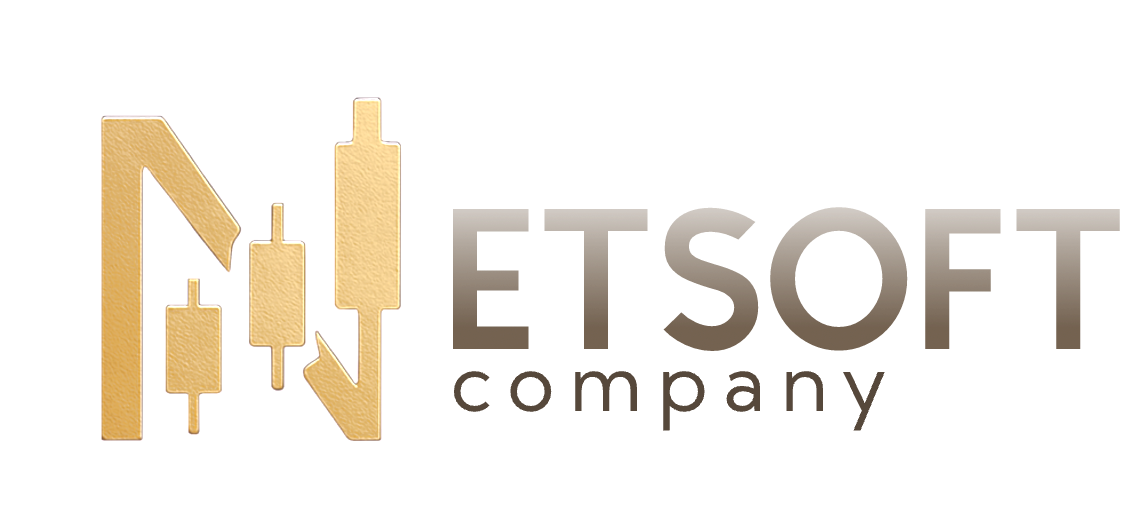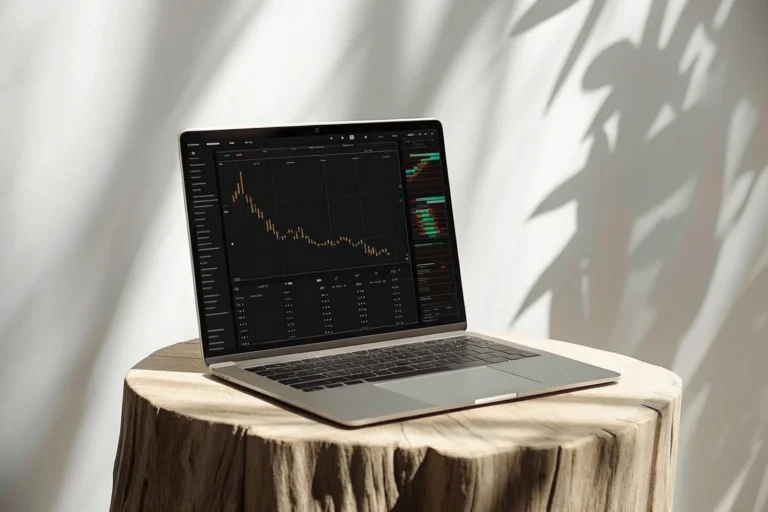CFD Nasdaq: Strategies For Tech-Led Indices

Understanding Nasdaq CFDs And Tech-Led Indices
When trading the Nasdaq 100 through Contracts for Difference (CFDs), traders can gain access to the largest tech-heavy companies without ever having to buy the underlying shares. CFDs are derivative instruments that track price movements of the Nasdaq index and are able to give you both long and short positions. Usually with smaller spreads and 24/7 market access, CFDs are attractive for active traders that want to get in and out of positions quickly. However, leverage may also increase any profit/loss that you generate – always be sure to understand how these derivatives operate before risking your capital.
What Is The Nasdaq 100 Index?
The Nasdaq 100 is comprised of the 100 largest companies that are listed on the Nasdaq stock exchange, which means that the list includes many non-financial blue-chip companies. Technology giants Apple, Microsoft, Amazon, and Nvidia are all traditionally listed names in the index, which makes the index a good measure for the global technology sector like it or not! It is a capitalization-weighted index meaning that price movements are more significant depending on the company’s weight. When a large mover reports solid earnings, it can sway the other price movements to the upside or downside very quickly.
Why Trade Tech-Led Indices With CFDs?
CFDs are flexible and efficient. Investors are able to capture the entire index performance with a small margin. Also, CFD traders are able to go long and short in the same transaction on the same index and execute very complex strategies like hedging long equity portfolios or capitalizing on short volatility. In comparison to CFD markets, futures or options exchanges have significantly higher capital barriers, and CFD platforms possess better charting capabilities that are intuitive and easy to use. Settlements also happen much faster which is beneficial for retail and institutional market actors alike.
Fundamental Analysis For Nasdaq CFD Trading
Technicals are our guide for entering and exiting a trade. Fundamentals are our GPS for determining the long-term direction of tech indices. Being aware of company earnings, macroeconomic data, and sector advances is critical when positioning before major swings.
Earnings Reports And Corporate News
Earnings season can be a volatile period for stocks. Quarterly earnings results from large company titans — especially the semiconductor, cloud computing, and e-commerce companies — can create 2–5% swings in the Nasdaq 100, all in a single trading session! Although traders would want to keep attention on any guidance revisions and trends in profit margin, investor sentiment is largely driven by guidance on potential forward-looking projects, such as the company’s advancements with their Artificial Intelligence (AI) development, in addition to any company news, announcements, and/or new products, especially when major items emerge from both the stock market and the earnings reports.
Economic Data Impact On The Tech Sector
Economic indicators — like quarterly GDP growth, employment data, consumer confidence — are important in the context of tech stocks. Sudden interest rates hikes or unexpectedly weak retail sales numbers can dull appetite for growth assets. Alternatively, positive consumer spending and or business investment numbers are often precursors to sectoral rallies. Likewise, any announcements from central banks and key economic data releases should be utilized to anticipate when sentiment may suddenly pivot.
Sector-Specific Developments And Innovations
The artificial intelligence (AI) breakthrough, cybersecurity breach, or regulatory triggers (e.g., antitrust investigations) can re-rate entire subsectors. A big AI breakthrough might lift chipmakers and software names, yet privacy regulations could dampen social-media stocks. Watching patent filings, M&A buzz, and product launch roadmaps helps you see the next rotation within the index and manage your CFD positions on the long/short side.
Technical Analysis Techniques For Nasdaq CFDs
Chart analysis remains indispensable for timing trades in a fast-moving index. Here are four cornerstone tools that blend well on Nasdaq CFD charts.
Moving Averages And Trend Identification
Simple and exponential moving averages (e.g. 50-day and 200-day) will smooth out noise and identify the underlying trend. A bullish “golden cross” (where the short MA crosses above the long MA) can often be the precursor of a sustained up trend, while it’s counterpart, the death cross, can signify a potential decline. If we combine moving averages with price-action patterns (e.g. higher highs and higher lows), this will give the trader better entries.
Relative Strength Index (RSI)
The index ranges from 0 – 100 with overbought being above 70 and oversold being below 30. In trending markets, the index can remain extended for weeks. Look for divergences (the price makes a higher high but the RSI doesn’t confirm this move) to spot early reversals.
Fibonacci Retracement And Extensions
Common retracement levels (38.2%, 50%, 61.8%) are often levels of support or resistance after a strong move. Traders usually draw Fibonacci levels from swing low to swing high to find pull back zones to enter in the direction of the trend. Extensions (e.g. 161.8%) can be used to provide potential targets once momentum has been restored.
Volume And Price Action
Volume spikes on breakouts or breakdowns confirm the move. Lack of volume can be an early indicator of a false breakout. Volume analysis can also be combined with price action patterns, such as engulfing bars, or doji, to determine the strongest trade signals.
Nasdaq CFD Trading Strategies
Adapting your timeframe to market conditions and personal temperament is key. Below are tactics suited for traders across horizons.
Short-Term Strategies
Short-term traders aim to exploit intraday volatility and news-driven moves.
Scalping High-Momentum Tech Stocks
Scalpers take rapid, small-profit trades — often targeting a few points per index move — using 1- to 5-minute charts. Tight stop losses and lightning-fast order execution are vital. Look for bursts of activity around key data releases or earnings announcements.
News-Based Day Trading
Breaking headlines — like an unexpected Fed rate statement or a big earnings surprise — can spark quick index swings. Pre-define entry criteria (e.g., price closing above the first 5-minute high) and risk parameters to avoid emotional decisions.
Medium-Term Strategies
Medium-term traders hold positions for days to weeks, balancing momentum and fundamentals.
Swing Trading For Tech-Led Indices
Identify clear support and resistance levels on 4- to 12-hour charts. Enter on pullbacks into major moving averages or Fibonacci zones, and exit near recent highs or projected extension targets. Use trailing stops to lock in gains as trends develop.
Long-Term Strategies
Longer-term traders ride multi-month trends, focusing on macro themes and sector rotation.
Position Trading With Sector Trends
Allocate capital based on broader cycles — such as digital-transformation booms or semiconductor supercycles. Use monthly charts to confirm wide-angle trends, and adjust exposure at quarterly or annual earnings inflection points.
Risk Management For Nasdaq CFDs
No strategy is worth following without the proper risk controls in place.
Setting Stop-Loss And Take-Profit Levels
You should always have a maximum loss per trade, which is generally 1-2% of account equity. Place your stops beyond technical barriers, such as below a recent swing low. Then, size your positions accordingly. Also be sure to set your profit targets or like trailing stops to lock in a profit.
Leverage Management And Position Sizing
More leverage means more potential upside – and greater risk. Conservative traders may use 5:1 or 10:1 leverage for Nasdaq CFDs while aggressive scalpers may use upwards of 30:1 — but their position size will presumably be much smaller. A 1:2 risk/reward ratio is appropriate; as with all things, if you size them appropriately then your winners will outnumber your losers.
Diversification Across Tech Subsectors
Returns can vary significantly between sub-sectors within an index with a high technology exposure; software, hardware, biotech, cloud, or semiconductors. Some partial hedges in related ETFs or alternative CFDs could help offset concentration risk when an idiosyncratic drawdown occurs.
Customizing Your Nasdaq CFD Strategy
Personalizing your edge often separates profitable traders from the rest.
Choosing Alternative Indicators And Tools
Beyond the basics, explore tools like Ichimoku Clouds for trend strength, Bollinger Bands for volatility, or On-Balance Volume for accumulation/distribution signals. No single indicator is infallible — combine complementary metrics to confirm setups.
Backtesting And Demo Trading
Test new ideas on historical data to gauge win rates and maximum drawdowns. Then, deploy in a demo account under real-time conditions. Only transition to live funds once a strategy demonstrates consistency over multiple market regimes.
How To Start Trading Nasdaq CFDs
For new traders, a straightforward and methodical approach makes the learning curve easier.
Step 1: Finding a Reliable Broker
Choose a regulated provider that has tight spreads on Nasdaq CFDs, reliable execution speeds, transparent cost disclosure, and good customer service. Check user ratings and regulatory disclosures as well as institutional quality platforms such as MetaTrader or proprietary web-based platforms.
Step 2: Learning The Trading Platform
Get a good handle on the platform where you will be trading by learning the charting features, order-entry options (like one-click), watchlists, and risk management (like guaranteed stop losses). The quicker you can navigate the platform, the quicker you can enter and exit trades.
Step 3: Opening and Closing Trades
Plan out a routine that includes scanning overnight news, assessing levels in premarket, setting alerts for critical technical situations, and trading within specific hours. You should also know how to quickly adjust orders or close positions if markets shift suddenly.
Conclusion: Mastering Nasdaq CFD Strategies
Trading the Nasdaq through CFDs offers the best of both worlds: rapid-moving, tech-sector excitement coupled with the advantages of leveraged derivatives. By combining disciplined fundamental research, diligent technical analysis, and firm risk management procedures, you can develop strategies developed for your own timeframe and your risk appetite. Keep learning, keep backtesting, and keep fluid strategies; these factors will be your best friends as you continue to master these rapidly moving tech indices. In summary, it’s true, “plan your trades and trade your plans”; being prepared and being prudent are the keys to consistent profitability in the world of trading CFDs.




